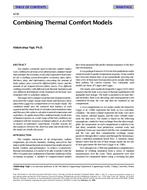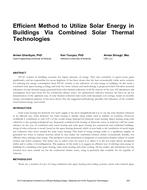Laboratory measurements of the performance of residential heat recovery ventilators have been carded out for the R-2000 Energy Efficient Home Program. This work was based on a preliminary test procedure developed by the Canadian Standards Association, part of which calls for testing the HRV under cold weather conditions. An environmental chamber was used to simulate outdoor conditions. Initial tests were carried out with an outdoor temperature of -20°C; subsequent tests were carried out at a temperature of -25°C. During the tests, airflows, temperatures, and relative humidities of airstreams entering and leaving the HRV, along with electric power inputs, were monitored. Frost buildup in the heat exchangers and defrost mechanism, such as fan shutoff or recirculation, led to reductions in airflows. The magnitude of the reductions is dependent on the design of the heat exchanger and the defrost mechanism used. This paper presents the results of tests performed on a number of HRVs commercially available in Canada at the time of the testing. The flow reductions for the various defrost mechanisms are discussed.”
Units: SI
Citation: Symposium, ASHRAE Transactions, 1987, vol. 93, pt. 2, Nashville, TN
Product Details
- Published:
- 1987
- Number of Pages:
- 12
- File Size:
- 1 file , 1 MB
- Product Code(s):
- D-NT-87-07-3


